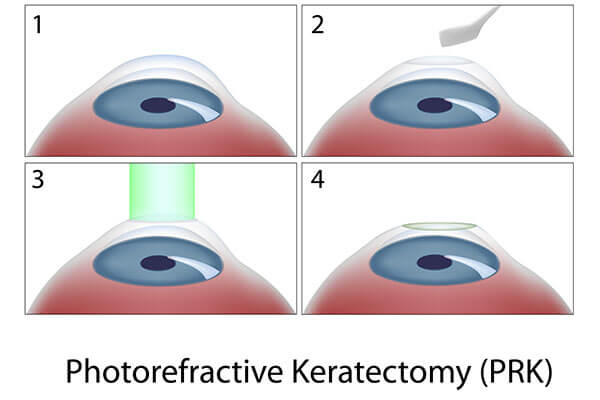What is PRK?
Like LASIK and wavefront-guided custom cornea treatment, the Advanced Surface Ablation (PRK) procedure utilizes an excimer laser to reshape the cornea.
It is used to correct nearsightedness, farsightedness, and astigmatism, and does not require the use of a microkeratome.
With Advanced Surface Ablation (PRK), the epithelium (or outer skin of the cornea) is removed and a laser is applied only to the front surface of the cornea. Once the laser treatment is performed, a soft contact lens is applied to the eye and left in place for several days.
Advanced Surface Ablation (PRK) has a somewhat longer healing period than LASIK, and certain patients may experience slight discomfort after surgery.
PRK Surgery in Portsmouth, NH
PRK (Photorefractive Keratectomy) is a safe, viable alternative to LASIK for many patients. Clear Advantage Vision Correction Center uses the same Technolas 217z excimer laser to perform PRK as we do for LASIK and Zyoptix customized LASIK.
In addition, our pre-operative evaluation for PRK is identical to the evaluation process for other laser vision correction procedures including the use of Zywave wavefront sensing technology. The difference between PRK and traditional LASIK is that no flap of tissue is created prior to resculpting the cornea with the excimer laser.
Prior to surgery, the LASIK surgeon will go through the procedure step-by-step so that you will know what will be taking place. Before starting the surgery, anesthetic drops are used to numb the eye, making the procedure virtually painless. Additionally, one eye will be covered while the other eye is being treated.
During the PRK procedure, the top layer of the cornea is gently removed to prepare the eye for treatment. Originally, this top layer or epithelium was mechanically lifted by the LASIK surgeon using a microkeratome or bladeless laser. The excimer laser is then used to resculpt the shape of the cornea reducing the refractive error.
After the treatment, a contact lens is placed on your eye as a bandage for four to six days while the epithelium of the cornea re-heals. This top layer is one of the fastest healing tissues in the human body.
In an optical sensor, the epithelium is the first surface that light focuses through as it enters your eye. Patients are advised to go home and”rest” their eyes for the remainder of the day. Patients are given eye drops to keep the eyes clean and moist and sleeping goggles and sunglasses are provided to help protect eyes from being rubbed.








